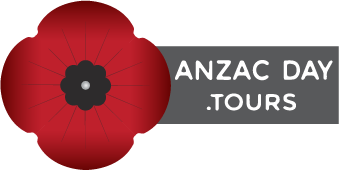Where is Anzac Cove?
ANZAC Cove is located on the Gallipoli Peninsula in Turkey, along the Aegean Sea. It is the site where the Australian and New Zealand Army Corps (ANZAC) landed on April 25, 1915, during World War I as part of the Gallipoli Campaign. The cove is situated on the western coast of the peninsula, north of the town of Gaba Tepe.
This small beach area became a key landing site for ANZAC troops during their attempts to advance against the Ottoman forces. Today, it is a significant memorial site, attracting visitors from Australia, New Zealand, and around the world, particularly on ANZAC Day to honor the soldiers who fought and died there.
What was Anzac Cove originally called?
ANZAC Cove was originally called Ari Burnu by the Ottomans before it became known for the landings during the Gallipoli Campaign in World War I. The name “Ari Burnu” refers to the point on the Gallipoli Peninsula where the ANZAC forces first landed on April 25, 1915. After the war, the site became known as ANZAC Cove to honor the Australian and New Zealand troops who fought there.
Why did the Anzacs land at Anzac Cove?
The ANZACs (Australian and New Zealand Army Corps) landed at ANZAC Cove on April 25, 1915, as part of the larger Allied operation during the Gallipoli Campaign in World War I. The goal of this campaign was to secure the Dardanelles Strait, a crucial waterway that would allow the Allies to open a supply route to Russia and weaken the Ottoman Empire, a key ally of Germany.
The ANZAC forces were originally supposed to land at Gaba Tepe, a more suitable and less fortified location. However, due to navigational errors, they were instead put ashore at the narrow beach that became known as ANZAC Cove. This area was more rugged and heavily defended by Ottoman forces, making it extremely difficult for the ANZACs to advance inland. The steep cliffs and rough terrain of the cove hampered their movement and left them vulnerable to heavy Ottoman resistance.
Despite these challenges, the ANZACs fought valiantly, but the campaign ultimately became a costly stalemate, leading to a withdrawal of Allied forces in January 1916. The bravery and sacrifice of the ANZAC troops at this landing site became a defining moment in the national identities of both Australia and New Zealand.
How to get to Anzac Cove from Istanbul?
To get to ANZAC Cove from Istanbul, the journey typically involves the following steps:
Drive or Bus to Eceabat or Çanakkale:
By Car: The most direct route is to drive from Istanbul to Eceabat on the Gallipoli Peninsula. The journey takes around 4 to 5 hours (approximately 300 km) via the O-6 highway and ferry crossings from Gelibolu or Lapseki.
By Bus: Several bus companies offer daily services from Istanbul to Eceabat or Çanakkale. The bus ride takes about 5 to 6 hours, and many buses stop in Eceabat, the closest town to ANZAC Cove.
Ferry Crossing:
If you’re traveling by bus or car to Çanakkale, you’ll need to take a short ferry ride across the Dardanelles Strait to reach the Gallipoli Peninsula. From there, it’s a drive of about 30-40 minutes to ANZAC Cove.
Tour Options:
Many organized ANZAC Day tours depart from Istanbul, including round-trip transportation to Gallipoli. These tours typically cover the Dawn Service and visit key sites like Lone Pine and Chunuk Bair.
Flight Option:
While there are no direct flights to Gallipoli, you can fly from Istanbul to Çanakkale Airport (approximately 1-hour flight) and then take a bus or car to ANZAC Cove.
The easiest way to visit ANZAC Cove from Istanbul is to book a guided tour, especially if you’re attending the ANZAC Day ceremonies.
How to get to Anzac Cove from Canakkale?
To get to ANZAC Cove from Çanakkale, here are the steps you can follow:
Ferry Crossing to Eceabat:
From Çanakkale, take a ferry across the Dardanelles Strait to Eceabat. There are regular ferry services, with the journey taking about 15-20 minutes. You can catch ferries that allow both passengers and vehicles.
Drive or Taxi from Eceabat to ANZAC Cove:
Once you arrive in Eceabat, you can either drive, take a taxi, or arrange for a local tour guide to take you to ANZAC Cove. The drive from Eceabat to ANZAC Cove is approximately 12-15 km (around a 15-20 minute drive), following the coast along the Gallipoli Peninsula.
Public Transportation:
Alternatively, local buses or organized tours are departing from Eceabat to ANZAC Cove and other significant sites such as Lone Pine and Chunuk Bair. Many tour companies in Çanakkale offer day trips that include transportation across the ferry and visits to the main memorials and battlefields.
For those visiting during ANZAC Day commemorations, there are often shuttle services and specific transportation arranged to accommodate visitors attending the Dawn Service.
Where to stay near Anzac Cove?
There are several accommodation options near ANZAC Cove for visitors attending the Dawn Service or exploring the Gallipoli Peninsula:
1. Eceabat
Crowded House Hotel: Located in Eceabat, this is a popular choice for those visiting the Gallipoli Peninsula. It offers easy access to ANZAC Cove and guided tours are often available from the hotel.
Hotel Limani: Located in the town center, it provides comfortable accommodations with views of the Dardanelles Strait and proximity to ANZAC memorial sites.
2. Çanakkale
Kolin Hotel: A luxury hotel located on the Dardanelles Strait, Kolin offers a more upscale experience. While it’s farther from ANZAC Cove, the ferry crossing from Çanakkale to Eceabat makes it an accessible choice.
Hotel Helen: A mid-range option located in the center of Çanakkale, offering easy access to the ferry to Eceabat and close to restaurants and shops.
3. Gelibolu
Gallipoli Houses: A boutique hotel in a village close to ANZAC Cove, offering a peaceful stay surrounded by nature. This is one of the closest accommodations to the ANZAC sites, making it convenient for visitors attending the Dawn Service.
4. Camping:
For those attending ANZAC Day, some visitors choose to camp near Anzac Cove for the night before the Dawn Service. This is an option during the commemorative period, but it is important to check local regulations and availability.
Booking early is essential, especially for ANZAC Day events, as accommodations can fill up quickly during this period


